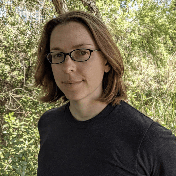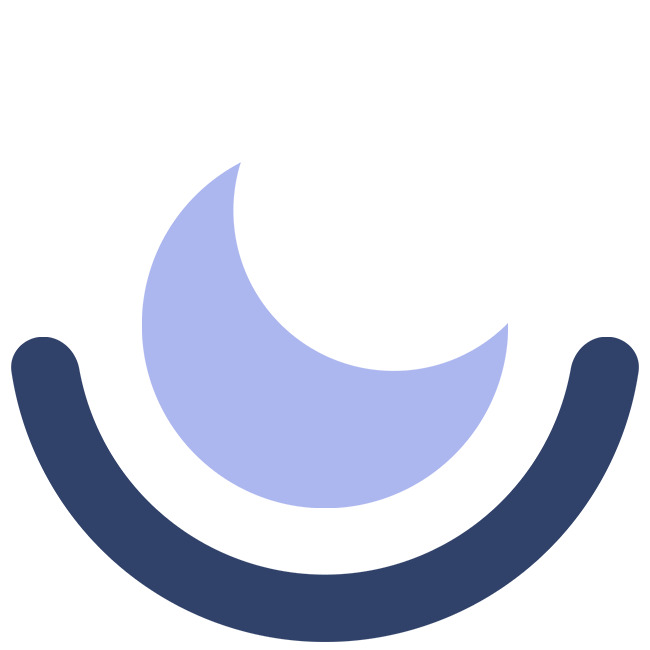Central sleep apnea (CSA) is an uncommon sleep disorder, affecting less than 1% of the general population. In CSA, a person’s breathing stops repeatedly during sleep, interrupting sleep and leading to poor quality rest, daytime sleepiness, and morning headaches.
We break down everything you need to know about CSA, including the symptoms and types of CSA, risk factors that increase the chances of developing this disorder, and current treatment options.
What is Central Sleep Apnea?
Central sleep apnea is a sleep-related breathing disorder where breathing temporarily stops as the sleeper makes no effort to breathe. These episodes of abnormal breathing are caused by the brain’s failure to send signals to the parts of the body that control breathing.
Occasional pauses in breathing are normal during sleep. In fact, as many as 40% of people briefly stop breathing as they wake up from sleep or after a deep sigh. As long as there are five or fewer breathing disruptions each hour, these episodes do not indicate a sleep disorder.
If left untreated, CSA can lead to a number of unwanted effects. CSA can cause a person to wake up during the night, leading to complaints of poor quality sleep, insomnia, and chest pain.
During the day, people with CSA may experience sleepiness, difficulty concentrating, and morning headaches. People with CSA are also at greater risk for workplace mistakes and car accidents.
Central Sleep Apnea vs. Obstructive Sleep Apnea
The two types of sleep apnea are central sleep apnea and obstructive sleep apnea (OSA). Both involve episodes of abnormal breathing during sleep. However, the cause of abnormal breathing differs between these two sleep disorders.
CSA occurs due to the absence of brain signals that tell the body to breathe, while OSA occurs when the upper airway collapses during sleep. While a person with CSA doesn’t try to breathe during these episodes, a person with OSA attempts to inhale against a narrowed or closed airway.
Another key difference between CSA and OSA is how frequently these conditions occur. Approximately 10% to 30% of adults in the United States have OSA, making it much more common than CSA. Researchers estimate that less than 1% of adults have CSA. In some cases, a person may show characteristics of both CSA and OSA.
Symptoms of Central Sleep Apnea
For many people, CSA may develop without any noticeable symptoms. When symptoms are present, abnormal breathing during sleep may be witnessed by a caregiver, bed partner, or by a health provider during hospitalization. Other symptoms of CSA may include:
- Disrupted or restless sleep
- Insomnia
- Poor quality sleep
- Morning headaches
- Excessive daytime sleepiness
- Difficulty concentrating
- Shortness of breath at night
- Nighttime chest pain
Types of Central Sleep Apnea
In adults, CSA is divided into categories based on a person’s symptoms and the results of a sleep study. CSA is either primary, meaning it occurs on its own, or secondary to another medical condition.
Primary Central Sleep Apnea
Primary CSA is a rare disorder in which breathing disruptions aren’t related to an underlying health condition. Researchers are unsure of how common primary CSA is in adults.
Central Sleep Apnea with Cheyne-Stokes Breathing
Cheyne-Stokes breathing is a pattern of breathing that can occur while a person is awake or while they sleep. This pattern involves cycles of fast and deep breaths that alternate with slowed or stopped breathing. When this pattern takes place during sleep, it is called central sleep apnea with Cheyne-Stokes breathing.
Central sleep apnea with Cheyne-Stokes breathing is typically associated with an underlying health condition, such as heart failure, kidney failure, or stroke. However, not everyone with CSA caused by a medical condition develops the Cheyne-Stokes breathing pattern. Central sleep apnea due to a medical disorder without Cheyne-Stokes breathing is usually caused by damage to the brainstem.
Central Sleep Apnea Due to High Altitude Periodic Breathing
CSA can also result from being in a high altitude environment. While breathing disruptions can occur at any elevation, about 25% of people develop symptoms after ascending to around 8,200 feet above sea level. At around 13,100 feet above sea level or higher, virtually everyone experiences aspects of CSA when they sleep.
Central Sleep Apnea Due to a Medication or Substance
A variety of medications and other substances can slow or stop breathing and lead to CSA. Medications and other substances linked to CSA include:
- Methadone
- Morphine
- Oxycodone
- Fentanyl patches
- Suboxone
- Benzodiazepines
- Antidepressants
Treatment-Emergent Central Sleep Apnea
Treatment-emergent CSA describes breathing disruptions that arise after a person with obstructive sleep apnea begins treatment with positive airway pressure (PAP). This form of CSA develops in 5% to 15% of people after starting PAP therapy and sometimes resolves on its own within a few months.
Central Sleep Apnea Risk Factors
While doctors can’t always determine why a person has CSA, there are a number of factors that increase a person’s chances of developing this condition.
- Age: Most people with CSA are over 65 years old. The increased risk of CSA in older adults may be due to the aging process and the higher frequency of certain health conditions in older people.
- Sex: Men and people assigned male at birth experience significantly higher rates of CSA. Researchers suggest that this increased risk may be related to the effect of hormones on breathing.
- Heart failure and stroke: Both heart failure and stroke increase a person’s risk of developing CSA. Heart failure is one of the main risk factors for CSA with Cheyne-Stokes breathing and the development of CSA after a stroke is common.
- Other medical conditions: Additional medical conditions associated with CSA include brain infection, certain spinal conditions, renal failure, and an irregular heartbeat.
- Medications or drug use: The use of opioids and other drugs that suppress breathing increase a person’s risk of developing CSA.
How Central Sleep Apnea Is Diagnosed
CSA is diagnosed based on a person’s health history and symptoms as well as the results of a diagnostic sleep study – either in a sleep lab, or through a home sleep test. Also called polysomnography, a sleep study involves monitoring certain body functions while a person sleeps including brain waves and breathing patterns. When diagnosing CSA, a sleep study takes place overnight in a specialized sleep laboratory.
Central Sleep Apnea Treatment
Treatment for CSA depends on the severity of the symptoms and health complications caused by CSA.
In people with mild symptoms and only minor complications from sleep-related breathing issues, treatment may focus on addressing underlying health conditions that are causing breathing issues. If these treatments don’t resolve CSA, additional treatment may be recommended.
For people with more severe symptoms or complications of CSA, doctors treat the underlying condition at the same time as starting one or more treatments to normalize breathing.
- Continuous positive airway pressure (CPAP): CPAP is the first treatment for most forms of CSA. A CPAP machine keeps the airway open during sleep by delivering pressurized air at a consistent level via a hose connected to a face mask worn during sleep.
- Supplemental oxygen: Supplemental oxygen during sleep may be recommended for people with CSA who experience low levels of oxygen in the blood. Supplemental oxygen can be used on its own or along with CPAP.
- Bilevel positive airway pressure (BiPAP): BiPAP, or BPAP, is recommended as a treatment only if CPAP and supplemental oxygen do not resolve CSA. BiPAP delivers air at a higher pressure during inhalation and a lower pressure during exhalation.
- Medication: If CPAP, BiPAP, or supplemental oxygen are not successful, medication may be recommended to stimulate breathing. However, medications can have harmful side effects and should be closely monitored by a health care professional.
- Nerve stimulation: Another alternative to CPAP is phrenic nerve stimulation. This treatment involves surgically implanting a device in the chest that stimulates breathing by causing the diaphragm to contract.
Frequently Asked Questions About Central Sleep Apnea
While treatment for CSA aims to reduce or eliminate CSA symptoms, treatment is rarely able to cure this condition. The outcome of treatment also depends on the cause of a person’s breathing issues. For example, in people with central sleep apnea due to a medication or substance, symptoms may resolve once the substance is stopped.
Like other sleep disorders, untreated CSA can lead to unwanted and sometimes dangerous health effects. People with CSA may experience excessive daytime sleepiness, morning headaches, and difficulty with memory, attention, and concentration. Sleepiness in the workplace or behind the wheel can also lead to unintended mistakes or car accidents. Additional risks depend on the underlying cause of CSA.
If you have symptoms of CSA or concerns about this condition, speak with a doctor. Some of the most common symptoms of CSA are poor sleep, daytime tiredness, and difficulty with concentration. It’s also important to reach out to a doctor if a caregiver or bed partner reports noticing abnormal breathing while you are sleeping.
References
Get Your Sleep Questions Answered Live on 4/30
Have questions about sleep? Get all your sleep-related questions answered in a Live Q&A on YouTube with renowned sleep expert Dr. Michael Breus at 5 p.m. PST/8 p.m. EST.







